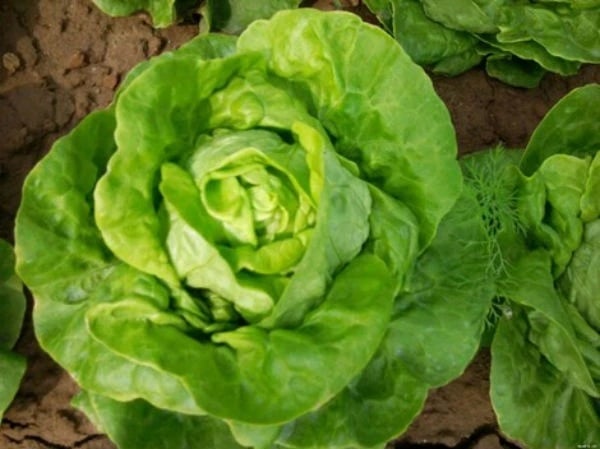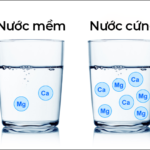1. Unnaturally Bright, Deep Green Color
Fresh lettuce should have a gentle green hue, sometimes with a hint of pale yellow in the younger leaves or near the stem. However, if you come across lettuce with an unusually deep green color and a waxy appearance, beware! This could indicate that the lettuce has been soaked in chemicals to prolong its freshness. Preservatives such as formaldehyde or artificial green coloring may be used to create an appealing, yet deceptive, appearance.
To inspect, observe the lettuce under natural light. If the color looks unnatural or “too good to be true,” it’s best to avoid it. Instead, opt for lettuce with a paler, more natural shade of green.
2. Excessively Crisp Leaves, Lacking Natural Suppleness
Fresh lettuce typically has crisp leaves but remains supple and flexible to the touch. On the other hand, lettuce soaked in chemicals often exhibits an unnatural crispness, with leaves that are stiff and brittle, resembling plastic. This occurs due to preservatives altering the cellular structure of the leaves, robbing them of their natural softness.
You can test this by gently bending a leaf. If it snaps dryly and feels lacking in elasticity, the lettuce has likely been treated with chemicals. Fresh lettuce should have a moderate crispness, retaining some flexibility when bent. So, be vigilant when choosing your lettuce to avoid bringing home potentially harmful produce.

3. Strange Chemical Odor or Lack of Natural Aroma
Fresh, clean lettuce usually has a subtle, pleasant aroma characteristic of green vegetables. However, if you detect a strong chemical scent, reminiscent of bleach or metal, it’s a clear sign that the lettuce has been soaked in preservatives such as formaldehyde or pesticides. In some cases, chemically treated lettuce may have no natural aroma at all, leaving an unappealing, “soulless” impression.
To be sure, bring the lettuce close to your nose and take a careful whiff. If you notice any strange odors, discard it immediately. A tip is to source your lettuce from trusted places, such as organic farmers’ markets or supermarkets with food safety certifications, to minimize risks.
4. White Residue or Unusual Powder on the Leaves
When inspecting lettuce, if you notice a fine white residue or an unusual powdery substance on the surface of the leaves, be cautious! This could be a sign of residual preservatives or pesticides. These chemicals are often sprayed or soaked onto the lettuce to prolong shelf life but are challenging to rinse off entirely, posing the risk of toxic buildup in the body over time.
To test, gently touch the surface of the leaves or rinse one leaf under running water. If the rinsing water forms slight suds or the leaf remains unusually shiny afterward, it indicates chemical treatment. Fresh lettuce should have a matte finish and leave no residue when rinsed. So, don’t skip this crucial step to ensure the safety of your family’s meals.
Tips for Choosing Safe Lettuce and Proper Washing
- Trustworthy sources: Purchase lettuce from reputable stores, supermarkets, or organic markets with food safety certifications.
- Seasonal preference: Lettuce grown in its natural season tends to have fewer chemicals as the favorable conditions reduce the need for artificial interventions.
- Check the stem: Fresh lettuce usually has a slightly moist stem, free from dryness or decay.
When washing lettuce, soak it in a dilute salt solution or baking soda solution (1 teaspoon of baking soda per liter of water) for 10-15 minutes, then rinse thoroughly under running water. This helps remove most chemicals and bacteria, ensuring a safer meal.










